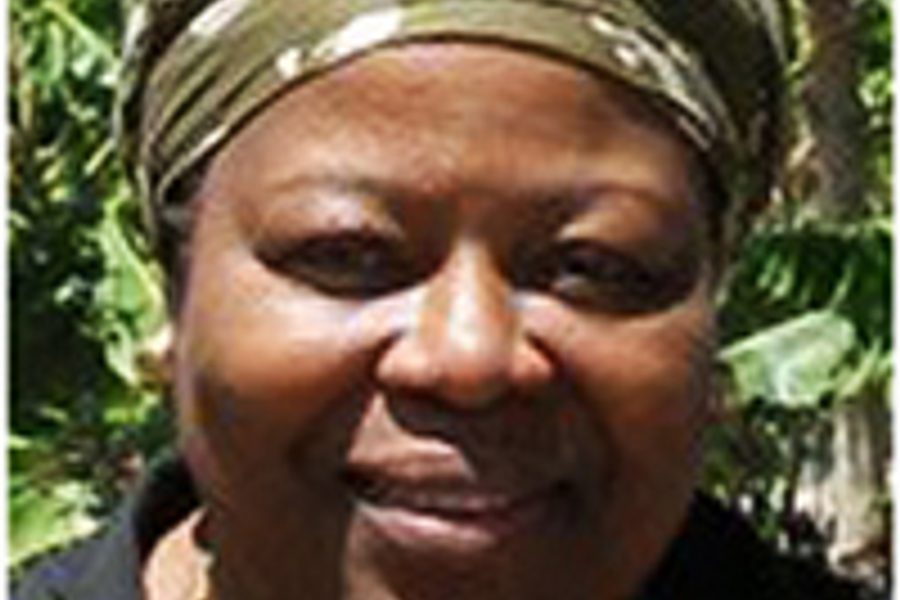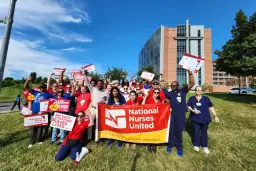
On January 12, 2010, a magnitude 7.0 earthquake struck Haiti, killing hundreds of thousands and devastating the impoverished country’s already fragile infrastructure. The world watched in horror, and then it acted — in theory, at least — to help rebuild Haiti’s homes, roads, government and economy. But as of June 21, a mere 2 percent of the $5.3 billion in near-term aid pledges made by donor countries at a March United Nations conference had actually been delivered, the Associated Press reported. On June 17, former U.S. President Bill Clinton inaugurated the Interim Haiti Reconstruction Commission, which aims to oversee the dispersal of international reconstruction dollars, and announced $66 million in approved aid projects.
But a June 22 report by U.S. Senate Democrats, written as Congress decides whether to authorize $2 billion in Haiti reconstruction aid, offered a grim picture of a nation with millions still displaced as hurricane season begins. “While many immediate humanitarian relief priorities appear to have been met, there are troubling signs that the recovery and longer term rebuilding activities are flagging,” the report said, going on to underscore that reconstruction has been marred by an absence of leadership from the Haitian government, led by President Rene Preval and Prime Minister Jean-Max Bellerive.
The Lambi Fund of Haiti has been trying to improve Haitian’s lives outside of government channels for 16 years. The mission of the nonprofit, founded by Haitians and Americans, is clear enough: “to assist the popular, democratic movement in Haiti. Its goal is to help strengthen civil society in Haiti as a necessary foundation for democracy and development.” Since the earthquake, the Lambi Fund has focused on assisting Haiti’s rural areas, to which 500,000 Port-au-Prince residents have fled.
Marie Saint Cyr, head of Lambi’s Board of Directors, believes lasting change in Haiti has to come from the grassroots — rather than through outside powers that have interfered in Haiti for centuries — and that sustainable agriculture has to be at the center of the country’s future. In These Times recently e-mailed with Cyr, a social worker by profession, about Lambi’s ongoing relief programs, the United State’s role in Haiti’s long-running political and economic instability, and what the media got wrong in its coverage of the earthquake and its aftermath.
—In These Times Web Editor/Associate Editor Jeremy Gantz
Politics
How would you rate the international relief and reconstruction effort to help Haitians recover? Has it gone better or worse than what you expected, in the basic sense of helping people most devastated by the disaster?
The Haitian people are grateful for the immediate response and the pledges of millions of dollars in aid. But many issues remain, such as decentralization. Much of the aid went to Port-au-Prince, considered the center of the country, but residents of towns such as Leogane did not receive support in terms of food distribution and rescue efforts.
The stark reality is that in the last five decades of my life, I have witnessed the international community “helping us” run schools, clinics, vaccination drives and other programs. This led to a certain dependency on international aid, to the detriment of the country as a whole.
The Lambi Fund has convened “regional assemblies” of Haitian grassroots organizations to help Haitians “define and prioritize rebuilding needs.” Do you think non-elite Haitians have been left out of the reconstruction process? If so, how exactly are these assemblies reversing that trend?
The primary focus of these assemblies is for participants to share with Lambi an assessment of their needs. Throughout Haiti’s history, non-elites have been kept out of the process in such profound ways that it is even reflected in the language. The elite refers to the rest of the population as “Moun sa yo”(those people), and “paysan nan figi moun” (peasants are in our faces or they don’t know their place).
These regional assemblies allow participants to represent their communities and affirms their capacity to make their own decisions. When we fund their initiatives and take into consideration their projected analysis of need, we are empowering the Haitian people by including them in the decision-making process. Ours is a bottom-up process that empowers and brings relevance to the efforts of the people in rural Haiti.
Given the long U.S. history of direct interference in Haitian political and economic affairs, what does the U.S. government — i.e., American taxpayers — owe Haiti in terms of post-earthquake reconstruction support? (Or if “owe” smacks too much of reparations, what are Americans morally obligated to provide to Haitians?)
The United States is in many ways as responsible for stifling Haiti’s trade possibilities as France was in the 19th century. The country has a moral imperative and the ideological responsibility to advance democracy in Haiti. It is quite evident however, that policies toward Haiti do not uphold the practices that lend themselves to democracy. American taxpayers must be more informed and encouraged to engage their congressional representatives in the efforts to change the U.S. tradition of accepting and supporting corrupt Haitian governments with no accountability. Moreover, the UN’s peacekeeping forces have been used as a tool to reduce class antagonisms in Haiti by maintaining a veneer of peace, but do nothing to address the malaise at their root causes, thereby only postponing and delaying class conflict.
A basic principle of the Lambi Fund is “self-sustainability,” and its programs focus on sustainable development and agriculture. What does (or should) “sustainable development” look like in Haiti?
Over a three-year period, I had the privilege to observe the evolution of a grassroots effort to build a mill. I watched as members of an organization eagerly received the training needed to build, manage and sustain the project. I was there to witness this most extraordinary process of bottom-up sustainable transformation. Sustainability in Haiti is a balancing act that involves deferring to indigenous know-how while introducing a training protocol needed to strengthen the capacity to achieve those goals.
Sustainable development, but more specifically sustainable agriculture, integrates three main goals: environmental health, economic profitability and social and economic equity. It refers to agricultural production that can be maintained without harming the environment and the following principles:
-Provide food.
-Improve the environment and the natural resource base upon which the agricultural economy depends.
-Make the most efficient use of nonrenewable resources and on-farm resources
-Sustain the economic viability of farm operations.
-Enhance the quality of life for farmers and society as a whole.
Can you describe exactly how Lambi is trying to help Haitian farmers become self-sufficient?
The Lambi Fund of Haiti only funds local organizations to help Haitian farmers become self-sufficient. We increase their capacity to manage projects by building and strengthening farmers’ leadership skills. Lambi Fund’s strategy is also based heavily on the bottom-up approach, which relies primarily on peasant input in project development and implementation.
More information about our projects and how we fund them is available at www.lambifund.org.
The food riots in Haiti in 2008 showed how susceptible the country is to food price fluctuations on the international markets. Many critics see that susceptibility as a result of neoliberal “reforms” pushed by the U.S. beginning in the 1980s, which damaged Haiti’s rural economy by flooding the country with cheap subsidized rice from the north. Given those trade-level issues, do you think macro-level policy changes will have to be paired with better micro-level development practices for Haitian poverty to be significantly curtailed?
Unfortunately, the covert and overt role of the U.S., not just in Haiti, but the Caribbean overall, has resulted in the current economic situation. The U.S. tolerates Haitian governments that engage in fraud and corruption. Nothing can change unless there is moral responsibility on the part of the U.S. and political will from the Haitian government to stand for the welfare of the people of Haiti.
What’s the one thing Americans should know about recovery/reconstruction efforts in Haiti that they probably aren’t aware of?
The United States has had a strong hand in the management of this country since 1917 and essentially Haiti is an occupied territory, albeit unofficially. The American government drives most of the recovery and reconstruction efforts there. These efforts and contracts will benefit big businesses both in the U.S. and in Haiti and will not necessarily help to improve Haiti’s economy, facilitate greater transfer of skills or support Haiti’s needs for a durable long-term development plan.
How hopeful are you that the tragic earthquake might actually represent an opportunity to Haitians?
I am very worried that the global response to Haiti’s needs may not prove fruitful over the long term. It appears there is a convergence toward creating another elite body to oversee the “reconstruction in Haiti.” But this infers a return to the old order of things. Over two decades following the Duvalier era and with strong U.S. backing, we evolved amid corruption, fraud and blind stealing of the resources allocated by international donors. These same players are still on the ground. They are vying to create a new environment where they will still be in control while keeping the majority of the people in the periphery without any opportunity to share their hopes, wishes and visions for a new Haiti.
Politics
What’s one piece of national legislation you’d like to see passed right now?
I would like to see an immigration bill that addresses border protection and the status of undocumented residents in the U.S.
Tell us about a policy debate that you’re still on the fence about.
I am on the fence about the immigration issue, because while I support the legalization of undocumented and law-abiding individuals in the country, I understand and support the right of a country to control its borders.
My political awakening occurred when …
..I decided to study international affairs. I was totally devoted to a world where we can actually meet as a united people and treat each other with kindness. I had come from Haiti to the USA at 16, and was part of a large family. I was extremely sheltered in a great network held together by kinship ties. The bonds of mutual support were so strong that I never experienced poverty, nor lacked for anything. Although privileged, I did observe that other children [in Haiti] — particularly indentured servants called “restaveks” — were much less fortunate than I was.
What is the greatest challenge facing humankind today? And what’s one thing we can do about it?
Saving the environment is one of the greatest challenges facing humankind today. It is our responsibility to meet this challenge, and to ensure that the environment will sustain the next generation. I have made it part of my advocacy work in Haiti to support efforts that help the environment, like reforestation and education programs.
Who is your favorite elected leader, past or present? Why?
Dumarsais Estimé, a prototype of the president that is needed in Haiti today, was elected in 1946. His election was deemed to be a break with Haiti’s political tradition. Estimé was a civilian of humble origins and passionately anti-elitist. According to my 90-year-old father Joseph, he was the best chief of State that Haiti ever had and demonstrated a genuine concern for the welfare of the people. He initiated but never secured passage of Haiti’s first social-security legislation. He did, however, expand the school system, encourage the establishment of rural cooperatives, raise the salaries of civil servants, and increase the representation of middle-class and lower-class blacks in the public sector.
Actions like the nationalization of the Standard Fruit banana concession and the requirement for workers to invest between 10 percent and 15 percent of their salaries in national-defense bonds resulted in lessening his popularity. The Army forced President Dumarsais Estime to resign on May 10, 1950.
What campaign should we all sign on to right now?
The green campaign to protect the environment, because we are responsible to the next generation. It should be a worldwide priority.
Media
What’s the biggest thing U.S. media have gotten wrong in their portrayal of Haiti since the earthquake? What has most angered you about coverage of the earthquake and its aftermath?
What has bothered me about U.S. media coverage is its focus on the American response and not the international community’s response. For example, Cuba has provided medical services since 1998 and has been assessed by the Pan American Health Organization (PAHO) as “having made important improvement in the health profile of the Haitian people, improving infant mortality, explicit brain gain through training of medical personnel and establishing long term relationship[s?]” (See this page on PAHO’s website.) Cuba was barely mentioned in the coverage.
Moreover, the focus was on Port-au-Prince with limited attention given to provincial towns such as Leogane (the epicenter of the quake), which were deeply impacted and devastated by the earthquake. Media coverage also failed to mention the major impact of the quake on the rest of the country. There was little to no reporting on the migration of internally displaced persons to rural communities and its impact on already impoverished regions.
What media, whether local, national or international, do you depend on to know what’s really going on?
BBC, CNN, RFI, the New York Times and a wide variety of journals (including AARP, Chronicle of Philanthropy). I am an avid reader of books in many languages including French, English and Spanish). It would seem that there is never enough time.
Personal
What’s a lifestyle choice you’ve made recently to be greener?
Being consistent in recycling plastic and buying no soda for consumption in my home.
Name a historical figure you’d like to take out to dinner. Why?
Former President Bill Clinton. I would like to influence his thinking and his strategy for Haiti. He is being presented as the new voice of Haiti. Now that he is out of office I would hope that he could be open to seeing how American policies have hurt this nation and what can be done to reverse them for the betterment of the Haitian people.
What’s the best piece of advice someone gave you when you were young?
My parents encouraged me to value education. I can remember standing next to my mother, and my aunt, with a book open on their lap, reading. I was even allowed to lean on them while I read.
What are your prejudices? What are you doing to overcome them?
The pride of being Haitian and an expectation of courage, strength and ability to fight for one’s own battles is often a pitfall that must be assessed. Such an attitude can be empowering, but it can also cloud one’s thinking and judgment toward others.
—June 22, 2010





